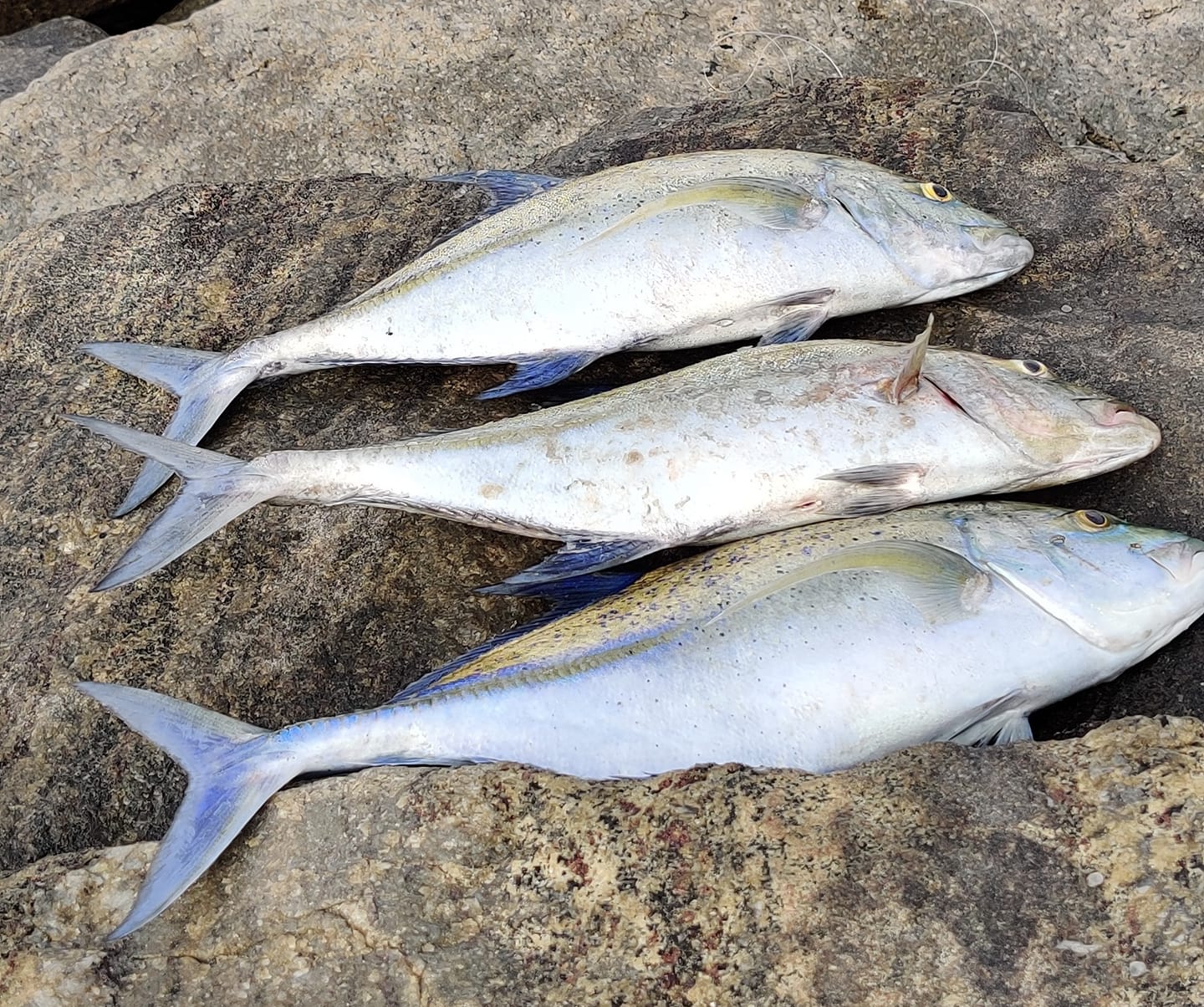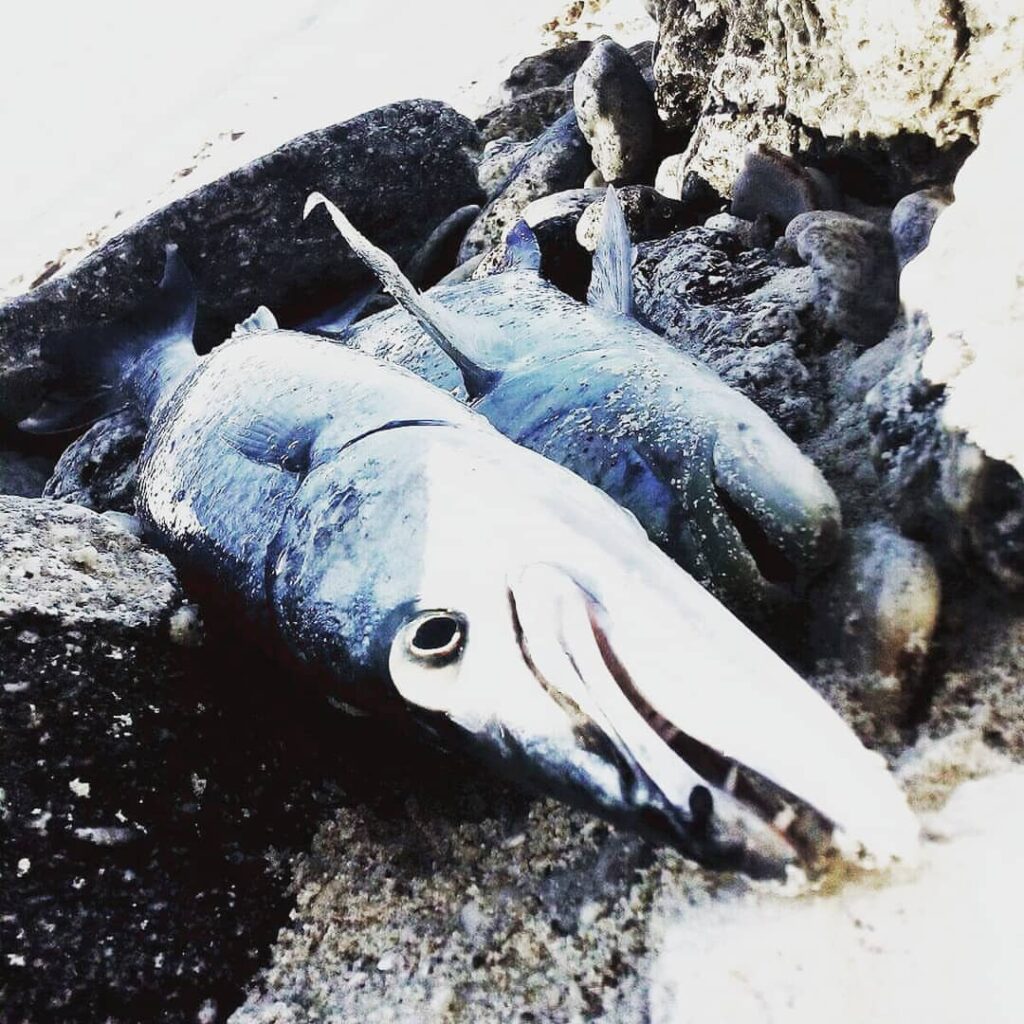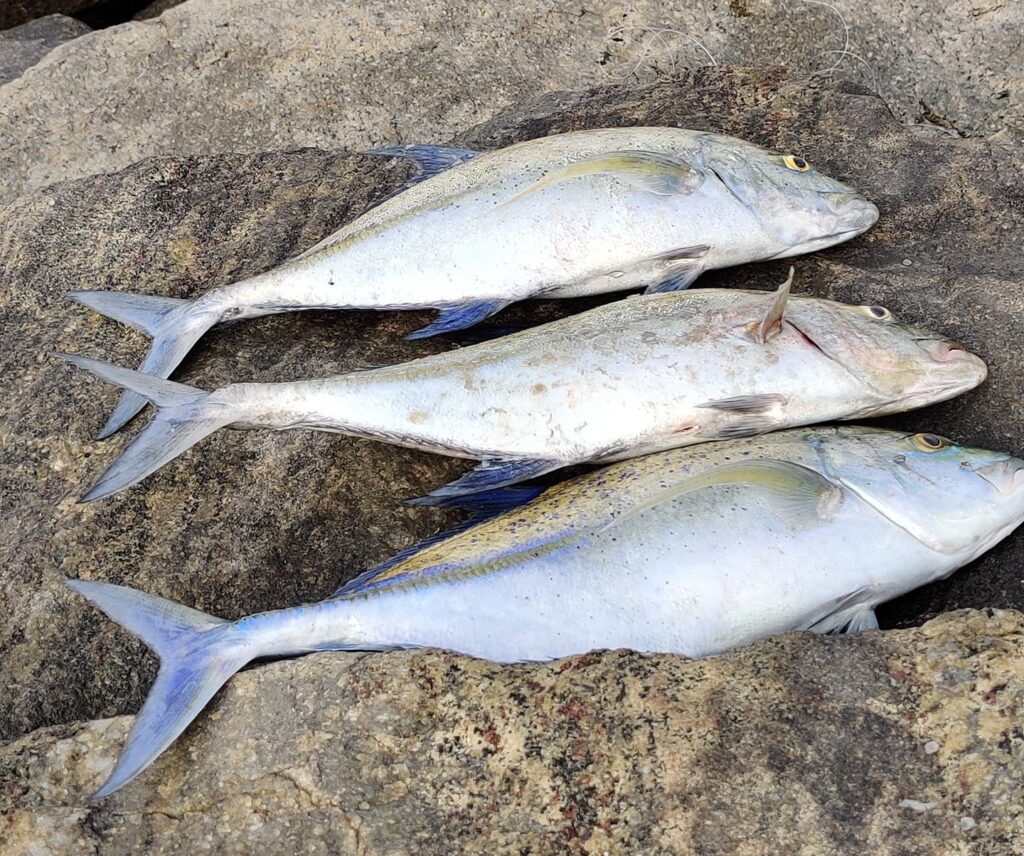
Longline fishing, also known as “leynu elhun,” is another interesting way to catch fish. We have also practiced certain tactics on our island, Fuvahmulah.
Waves constantly batter our island, Fuvahmulah, making longline fishing extremely difficult, especially without a lagoon. There is, however, a large area at the reef front where this method can be used. When the sea is calm, we place longline fishing lines in this location. We primarily deploy longline fishing lines in the herahafarogando area, which is located on the northeastern side of my island and where the reef front is close to the beach.
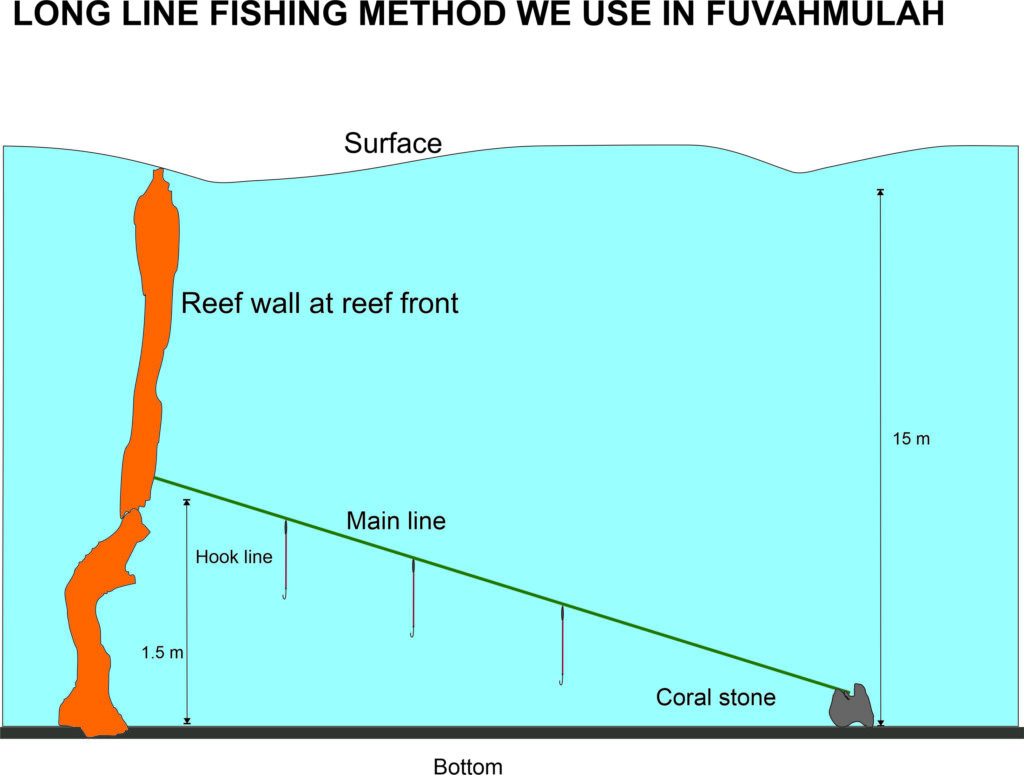
As the main line for this method, we use shielded copper wire that is 6 mm thick or nano, made of fiber. If nano is unavailable, we utilize insulated copper lines. We fasten the line’s end to a coral rock. We use a large coral stone to anchor the wire to the bottom. To hang the hooked lines at the bottom, we connect them to the main line using swivels. The hook lines consist of two and a half stainless steel wires.
Normally, we use two to three hook lines. We use cut-up eel, tuna, or yellowfin tuna heads as bait. We also sometimes use octopus as bait. We deploy the line at a depth of around 10 meters. When the main line is deployed, it slopes toward the coral stones secured at the bottom. The end of the line tied to the coral will be around 5 to 10 feet high.
Three persons will submerge themselves to deploy the line. We will set up the line at nightfall and collect it in the morning the next day. Gigantic trevallies and gropers are what we usually catch. This method also occasionally captures reef sharks and rays.
In the center region, they deploy fishing lines in lagoons with depths ranging from 60 to 80 meters to catch reef fish. The main fishing line is 300 lb monofilament. The main line is typically 60 to 80 meters long.
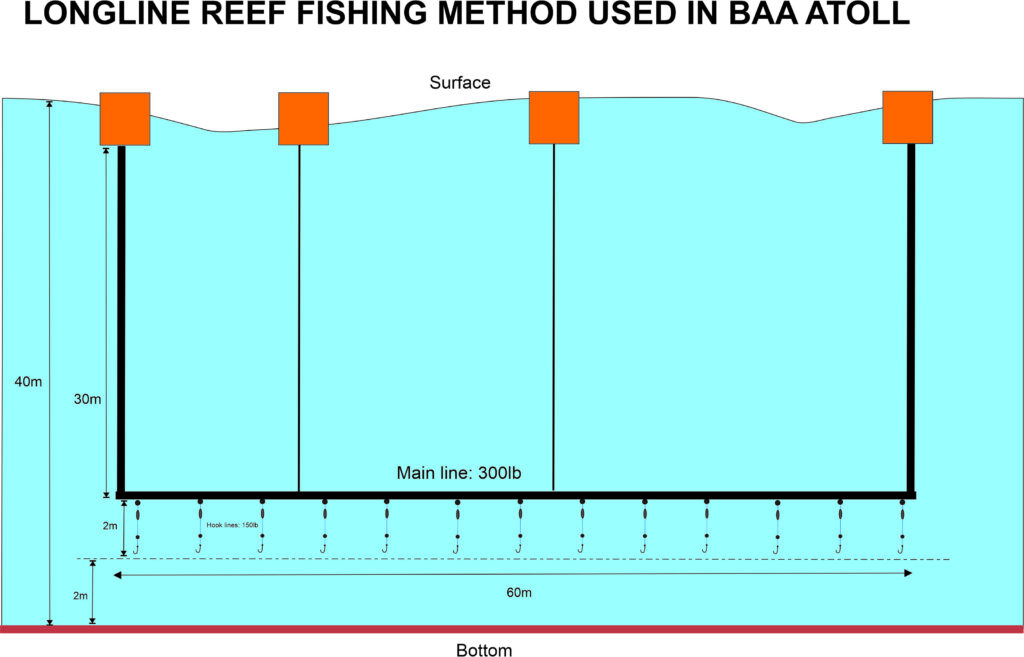
Forty meters deep is where the main line will go. At each end of the main line, two lines will rise to the top and connect to two big containers. There are 60 to 100 little hook lines deployed along the main line. The hook lines are around 2 meters in length. They will attach a lead weight of approximately 60 g to the hook’s end to suspend the line and attach a heavier weight of approximately 120 g to the top of the hook line, where the main line and hook line link.
Triggerfish and big-eye scads are typically used as bait. They will deploy the fishing line at approximately 6 a.m. After deploying the line, the fishermen return to the island and have tea. Two hours later, they went to check the line. They capture red snapper, big trevally, green jobfish, grouper, and emperor fish with this fishing technique.
